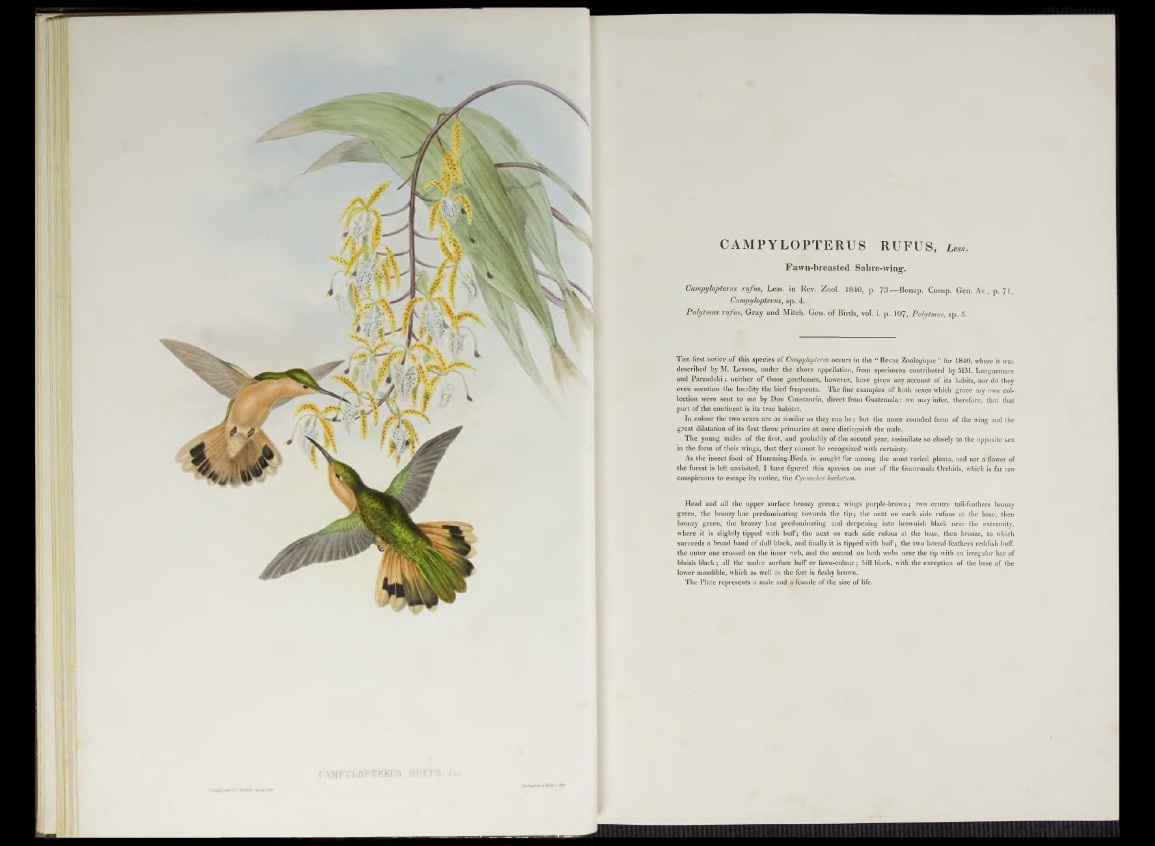
CAMÏPYJLiOPTEBüS M f B , le ss.
]hilpuouUljkWtiܮti/mp
CAMPYLOPTERUS RUFUS, Less.
Fawn-breasted Sabre-wing-,
Campylopterus rufus, Less. in Rev. Zooi. 1840, p. 73.—Bonap. Consp. Gen. Av., p. 71,
Campylopterus, sp. 4.
Polytmus rufus, Gray and Mitch. Gen. of Birds, vol. i. p. 107, Polytmus, sp. 5.
T h e first notice of this species of Campylopterus occurs in the “ Revue Zoologique” for 1840, where it was
described by M. Lesson, under the above appellation, from specimens contributed by MM. Longuemare
and Parzudakfeneither of tbose gentlemen, however, have given any account of its habits, nor do they
even mention the locality the bird frequents. The fiue examples of both sexes which grace my own col-
lection were sent to me by Don Constancia, direct from Guatemala: we may infer, therefore, that that
part of the continent is its true habitat.
In colour the two sexes are as similar as they can be; but the more rounded form of the wing and the
great dilatation of its first three primaries at once distinguish the male.
The young males of the first, and probably of the second year, assimilate so closely to the opposite sex
in the form of their wings, that they cannot be recognized with certainty.
As the insect food of Humming-Birds is sought for among the most varied plants, and not a flower of
the forest is left unvisited, I have figured this species on one of the Guatemala Orchids, which is far too
conspicuous to escape its notice, the Cycnoches barbatum.
Head and all the upper surface bronzy green; wings purple-brown; two centre tail-feathers bronzy
green, the bronzy hue predominating towards the tip; the next on each side rufous at the base, then
bronzy green, the bronzy hue predominating and deepening into brownish black near the extremity,
where it is slightly tipped with buff; the next on each side rufous at the base, then bronze, to which
succeeds a broad band of dull black, and finally it is tipped with buff; the two lateral feathers reddish buff,
the outer one crossed on the inner web, and the second on both webs near the tip with an irregular bar of
bluish black; all the under surface buff or fawn-colour; bill black, with the exception of the base of the
lower mandible, which as well as the feet is fleshy brown.
The Plate represeuts a male and a female of the size of life.